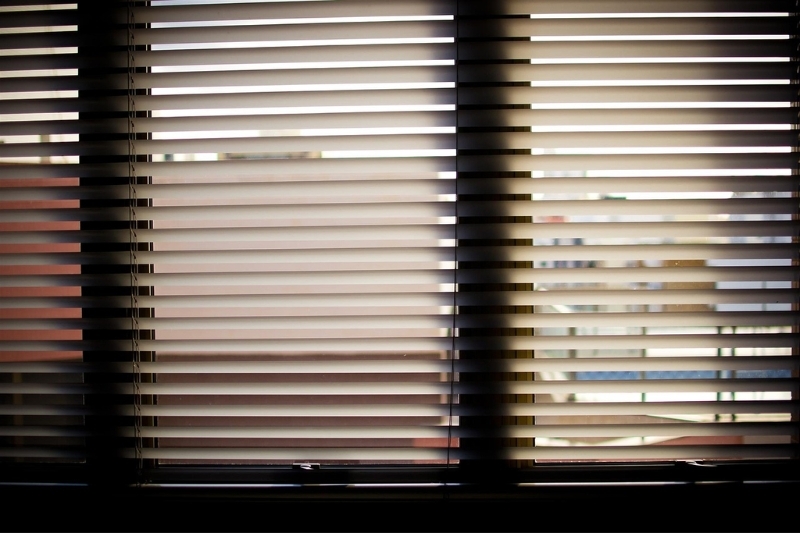When it comes to window coverings, fabric blinds and external blinds are two popular options that offer different benefits and considerations for homeowners. Fabric blinds, as the name suggests, are blinds made from various types of fabric materials. They are versatile, stylish, and can enhance the overall aesthetics of a room. On the other hand, external blinds are designed to be installed on the exterior of windows and provide additional protection against the elements. In this article, I will explore the pros and cons of fabric blinds and external blinds, and help you make an informed decision about which type of blind is best for your home.
Fabric Blinds
Fabric blinds have several advantages that make them a popular choice among homeowners. Firstly, fabric blinds offer a wide range of design options, allowing you to choose from various colors, patterns, and textures to match your interior decor. This versatility makes fabric blinds a great choice for those who want to add a touch of style to their windows.
Secondly, fabric blinds provide excellent light control. By adjusting the slats or using a blackout lining, you can easily regulate the amount of sunlight entering a room. This feature is particularly useful in bedrooms or home offices where privacy and light control are essential.
However, fabric blinds also have some drawbacks. One of the main concerns is their maintenance. Fabric blinds tend to collect dust and dirt more easily compared to other types of blinds. Regular cleaning is necessary to keep them looking fresh and prevent any allergies or respiratory issues. Additionally, fabric blinds may not be suitable for high-moisture areas such as bathrooms or kitchens, as prolonged exposure to moisture can cause damage and mold growth.
External Blinds
External blinds, also known as outdoor blinds or awnings, offer unique benefits for homeowners. One of the biggest advantages is their ability to provide shade and protection from the elements. By installing external blinds, you can create a comfortable outdoor space that is shielded from harsh sunlight, wind, and rain. This is especially beneficial for those who enjoy spending time in their garden or on their patio.
Another advantage of external blinds is their energy efficiency. By blocking direct sunlight, external blinds can help reduce the heat entering your home, thereby lowering your energy consumption for cooling. This can result in significant savings on your energy bills, especially during hot summer months.
However, external blinds also have some disadvantages. One consideration is the cost. External blinds tend to be more expensive than fabric blinds due to the additional materials and installation requirements. Therefore, if you have a limited budget, fabric blinds may be a more cost-effective choice.
Furthermore, external blinds require regular maintenance to ensure their longevity. Exposure to the elements can cause wear and tear, so periodic cleaning and inspection are necessary to prevent any damage. Additionally, external blinds may not be suitable for all types of windows or architectural styles, so it’s important to consider the compatibility with your home before making a decision.
Comparing the Price of Fabric Blinds and External Blinds
Price is an important factor to consider when choosing between fabric blinds and external blinds. Fabric blinds are generally more affordable compared to external blinds, especially if you opt for standard materials and basic designs. However, the cost can vary depending on the type of fabric, quality, and additional features such as motorization or blackout capabilities. On the other hand, external blinds tend to have a higher price tag due to the specialized materials and installation requirements. It’s essential to set a budget and determine your priorities to make an informed decision.
Assessing the Durability of Fabric Blinds and External Blinds
Durability is another crucial factor to consider when selecting blinds for your home. Fabric blinds can vary in durability depending on the quality of the fabric and construction. Higher-quality fabric blinds are typically more durable and resistant to fading, tearing, and fraying. It’s essential to choose fabrics that are specifically designed for window coverings and can withstand regular use and cleaning.
For external blinds, durability is essential due to their exposure to the elements. Look for materials that are weather-resistant, such as aluminum or PVC, which can withstand UV rays, moisture, and temperature changes without warping or deteriorating. Additionally, consider the warranty offered by the manufacturer to ensure long-term protection and peace of mind.
Evaluating the Quality of Fabric Blinds and External Blinds
Quality is a crucial consideration when choosing blinds for your home. In the case of fabric blinds, the quality of the fabric, hardware, and construction will determine their overall performance and longevity. Look for reputable manufacturers or suppliers that offer high-quality materials and reliable mechanisms for smooth operation and durability.
Similarly, when it comes to external blinds, quality is essential to withstand the outdoor elements and ensure long-lasting performance. Choose blinds from trusted brands or suppliers that offer warranties and have a track record of providing durable products. It’s also recommended to read customer reviews and testimonials to get an idea of the quality and satisfaction of previous buyers.
Which Type of Blind is Best for Your Home?
Choosing between fabric blinds and external blinds ultimately depends on your specific needs, preferences, and budget. If you’re looking to enhance the aesthetics of your interior and want versatile light control options, fabric blinds may be the ideal choice. On the other hand, if you prioritize outdoor comfort, energy efficiency, and additional protection from the elements, external blinds could be the better option.
Consider factors such as the room’s location, your lifestyle, the climate in your area, and the level of maintenance you’re willing to commit to. Consulting with a professional blinds supplier or interior designer can also provide valuable insights and help you make an informed decision that suits your home.
Tips for Maintaining and Caring for Fabric Blinds and External Blinds
Regardless of whether you choose fabric blinds or external blinds, proper maintenance and care are essential to ensure their longevity and optimal performance. Here are some tips to help you maintain and care for your blinds:
- Regularly dust fabric blinds using a soft, clean cloth or a feather duster to prevent the accumulation of dust and dirt. For deeper cleaning, consult the manufacturer’s instructions or consider professional blind cleaning services.
- Avoid using harsh chemicals or abrasive cleaners on fabric blinds, as they can damage the fabric or affect their color and texture. Instead, opt for mild detergent solutions or specialized fabric cleaners.
- For external blinds, regularly inspect for any signs of damage or wear, such as loose fittings, tears, or fading. Clean them with a hose or mild soap solution, and ensure they are properly dried to prevent mold or mildew growth.
- If the blinds are motorized, follow the manufacturer’s instructions for maintenance and periodic servicing to ensure smooth operation and prevent any issues.
- When not in use, consider retracting external blinds to protect them from harsh weather conditions and prolong their lifespan.
By following these maintenance tips, you can extend the life of your blinds and keep them looking great for years to come.
Choosing the Right Blinds for Your Home
In conclusion, fabric blinds and external blinds both offer unique advantages and considerations for homeowners. Fabric blinds provide versatility, style, and light control options, while external blinds offer shade, protection, and energy efficiency. When deciding between the two, it’s essential to consider factors such as price, durability, and quality. By assessing your specific needs, preferences, and budget, you can make an informed decision that suits your home and lifestyle. Remember to also prioritize regular maintenance and care to ensure the longevity and optimal performance of your chosen blinds. Whether you opt for fabric blinds or external blinds, they can both enhance the overall aesthetics and functionality of your home.





